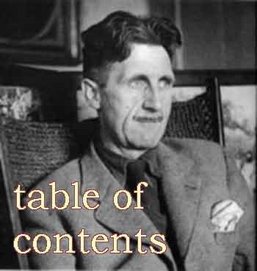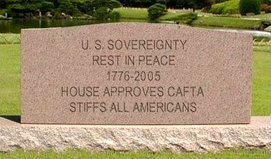
A French church carries the legacy of Le Corbusier
By Nicolai Ouroussoff The New York TimesTUESDAY, SEPTEMBER 12, 2006-->Published: July 31, 2006
FIRMINY, France More than 40 years after he drowned off a remote beach in the south of France, Le Corbusier remains a transcendent force. Even if some blame him for the modern city's greatest sins, from the steamrolling of historical neighborhoods to a stultifying emphasis on function, he is indisputably the most influential architect of the past century.
Now workers in this rural mining town are putting the finishing touches on a small church he designed with a former student in the early 1960s. A soaring asymmetrical cone that rises out of an imposing concrete base like some strange pagan temple, it is a reminder of why Le Corbusier's work inspires such passionate devotion.
Completed by that protégé, José Oubrerie, who has tinkered with many elements of the original sketches, the church of Saint-Pierre has stirred debate among Parisian academics about the ethics of finishing a work left behind by a legendary architect.
But the core of Le Corbusier's concept remains intact: a sanctuary that distills the history of architecture from the primitive cave through Modernism. At the same time its warped planes anticipate the fluid architectural forms of today, though with a restraint that shows how so much recent work has been diluted by cheap effects.
That it exists at all is a miracle. From its inception the project seemed doomed to join the long list of architectural masterpieces that exist only on paper.
Le Corbusier first came to Firminy, tucked into a valley of the Loire west of Saint-Etienne, in the early 1950s at the invitation of Eugène Claudius-Petit, a liberal mayor who had visions of transforming the town into a postwar workers' paradise, a "green city" to replace the grimy black one. Over the following decade the two collaborated on one of the densest concentrations of Le Corbusier buildings anywhere.
The architect's 1965 House of Youth and Culture, a slender concrete-and-glass slab flanked by a small outdoor stadium, dominates the town center; to the north a low-cost version of his 1952 Unité de Habitation housing block in Marseille sits at the top of a hill, a monument to the town's egalitarian ideals.
The church, which sits alongside the stadium, occupies a privileged place in Le Corbusier's œuvre. The architect, who prided himself on his Protestant heretic forebears and dismissed the church as a dead institution, designed only two other religious structures, also in France. Both buildings - his curving, elegiac 1955 chapel at Ronchamp and his monumental concrete La Tourette monastery from 1960 - rank among his most evocative works.
Yet in this case he had a hard time finding support. The bishop of Lyon was not enamored of the design's allusion to pagan forms. Nor did he approve of the site, which seemed buried at the bottom of the valley. Eventually he withdrew his pledge to pay for the church's construction.
"The bishop sent a priest to the studio on Rue de Sèvres in Paris," Oubrerie, 73, said in an interview. "He was a very traditional man, the kind who is very nice but kicks you when you turn around. We understood he would not make a positive report. So Le Corbusier wrote a letter to the bishop saying, 'At my age, with everything I have done, you should have confidence in me.' Of course it changed nothing."
Construction began in 1971, six years after Le Corbusier's death, with private funds from the Le Corbusier Foundation (raised in part by the sale of some of his art collection). But the contractor went broke, and construction stopped with only half the building completed. For years it stood abandoned, its concrete base evoking a disused military bunker.
Oubrerie, meanwhile, went on to build a few significant works of his own, including a French cultural center in Damascus, whose folding interior surfaces were a riff on Le Corbusier's fluid spaces. But Le Corbusier's brand of ascetic radicalism already seemed distant from contemporary events. And Oubrerie's association with the old master made him seem like a relic.
"It was a difficult time," said Oubrerie, who remembers wearing a suit and tie as he watched students rebel in the Paris streets in 1968. "People would ask, 'Is he still alive?' Then they would say, 'Thank you very much.' They did not like his work."
By the early 1980s, with France in the midst of a recession, Oubrerie had left for a teaching job in the United States. He organized a show at the University of Kentucky's school of architecture on the Firminy project in the hope of drumming up funds. But none materialized.
In 1995 the church's half-completed base was declared a historic landmark by the state. Unable to remove it, regional and local officials relented and agreed to pay for the project. And in 2001 Oubrerie, by then resigned to a life in academia, was brought in to oversee the design, which everyone agreed would need revision.
Because French law forbids municipal expenditures on churches, the main worship space on the second floor will be used as a performance space. And Oubrerie has transformed the ground floor, originally intended as a priest's residence and Sunday school, into an exhibition space that will be used by the prestigious Museum of Modern Art in Saint- Etienne.
"When the new mayor started to look at finishing the church, he had the idea that it was going to bring them some money," Oubrerie said. "They want to make it a place for tourists. So we are going to make an information center. We are going to organize a place for tour buses at the top of the hill." He has also adapted the design to accommodate the heating and ventilation systems demanded by current building codes.
This is not a minor change. It has meant the loss of ventilation panels that would have allowed fresh air to flow through the interiors, essential to Le Corbusier's vision of an architecture in tune with the rhythms of nature.
The changes led to intense debates about authorship. How would Le Corbusier have tackled all of these issues? With no answer to that question, could the Church of Saint-Pierre be defined as part of his work?
For me the answer is no. Le Corbusier never produced finished working drawings for the church. Like any architect, he continually revised his work, and there is no way to know what changes he would have made in the final phase of design. Oubrerie is wise enough to admit that the project is a collaboration of sorts.
The apprentice bringing the master's work to fruition is an old architectural tradition. A handful of architects worked on the design of St. Peter's Basilica. Jacques-Germain Soufflot's great neo-classical church of Sainte-Geneviève in Paris, now the Panthéon, was completed by a pupil, Jean-Baptiste Rondelet.
And while some will see the changes as a betrayal of Le Corbusier's genius, the church's monolithic dome still cloaks a remarkably assured work of architecture.
In some ways the building echoes the interlocking geometric forms of his Purist period. His earliest sketches for the site show a simple geometric composition - cube, pyramid, cone - a monumental structure that suggests a primitive machine but echoes the surrounding mountains, its top sliced off as if it were tipping toward the sun.
Romain Chazalon, a 20-something architecture student who has helped oversee construction, picked me up at Firminy's small train station and drove to a ridge above the city that he said was the best vantage for a first sighting.
Even from a few hundred meters the dome's contorted form holds its own against its mountainous backdrop. A concrete channel wraps around the base of the cone to collect storm water. It also conceals a thin strip window just below that is used to deflect natural light into the interiors, part of Le Corbusier's vision of a machine wholly in tune with the natural world.
His presence is felt strongest in the approach to the building. It is set on a slight mound, its blank concrete facade facing the main road. As you ascend, you slip along the side of the building before turning abruptly and crossing a bridge that slopes up to meet the main entry. This passage forces you to slow your pace and creates a delicious sense of anticipation.
But it doesn't stop at the doors; inside, a remarkably fluid circulation loop draws you through a series of emotional stages, with the architecture mirroring your own psychic awakening. Your first sight is the altar, flanked by a lectern and a low bench embedded in the back wall where priests were intended to sit during Mass: simple concrete forms arranged with the precision of a stage set. A small chapel is tucked beneath a balcony on the right.
The floor slopes gently, almost imperceptibly downward, drawing you toward the altar. From there, you turn to face asymmetrical rows of pews that climb to the sweeping balcony at the rear. The procession ends with a narrow stairway that leads you back down from the balcony to the worship space and out into the world.
What makes this potent architecture is its ability to draw you through these spaces without any coercion. There is no single path, but you intuitively know where to go.
That experience is reinforced by the subtle use of light. The snakelike soffit, roughly at shoulder height, extends along the walls of room, from the entrance to the back of the altar to the balcony, emitting diffuse light that illuminates the path. The towering dome, 23 meters high, or 75 feet high, is pierced by two openings - one circular, the other square, both painted in bright primary colors - whose intense glow pulls the eye upward.
This intuitive sense of balance is rare. Frank Lloyd Wright achieved it in some of his great works, but not at the Guggenheim Museum in New York, whose barreling rotunda, for all its beauty, is more controlling.
The fusion of rigor and freedom at Firminy reminds us why Le Corbusier remains so intimidating. No major talent today has escaped his influence. The sweeping ramps of Rem Koolhaas's Kunsthalle in Rotterdam, or his unbuilt design for the Jussieu library in Paris, for example, could not have been imagined without the curving ramp that penetrates Le Corbusier's 1964 Carpenter Center. (Koolhaas prefers to credit Mies van der Rohe.) And the curved planes found in the work of Zaha Hadid and Ben van Berkel can be seen as the offspring of Le Corbusier's sloping floors.
Oubrerie's triumph lies in preserving the spirit of Le Corbusier's design without treating the project as a shrine. Minor changes are visible - the use of polycarbonate instead of glass in the apertures above the altar, for instance, which slightly distorts the light - but his most aggressive are in the ground-floor museum, where the overscale ducts and pivoting red doors owe as much to the Pompidou Center in Paris as to raw concrete forms of the late-period Le Corbusier. As a graceful base for his haunting dome, the museum is respectful without being slavish, which is just about right.
It's a creative dialogue between peers, as well as a gift from a student to his master. Le Corbusier's gift to his pupil, one would like to believe, was to trust him with this legacy.
By BeeBee aka Linda: I had no previous knowledge of Corbusier, as I was just looking up a google about the church of whats happening now that I use frequently. I ran across this monstrous, despicable mass of concrete that in no way resembles any churches that I have seen in my lifetime. A protege of this designer, Corbusier, started work on this church that never was finished because of a lack of funds. Then somehow the state deemed the location to be a historical landmark, we all know how politics work, and the municpal taxpayers paid for this blasphemous building. Now, mind you, France is 84% Roman Catholic, and by reading the article one learns that a certain Bishop was very displeased and refused to offer any funds toward the construction. The laws for municpal funding in France forbid the use of such funds to go toward building churches, so the building clearly does not resemble a church that I have ever seen. Will this be the future of the world, when pagan structures replace our beautiful churches, after the secualarists have done their job in removing all things Godly from the earth. This will mark the time of the anti-christs in direct war with the Lord, and we all know that the devils will lose in the end.








No comments:
Post a Comment